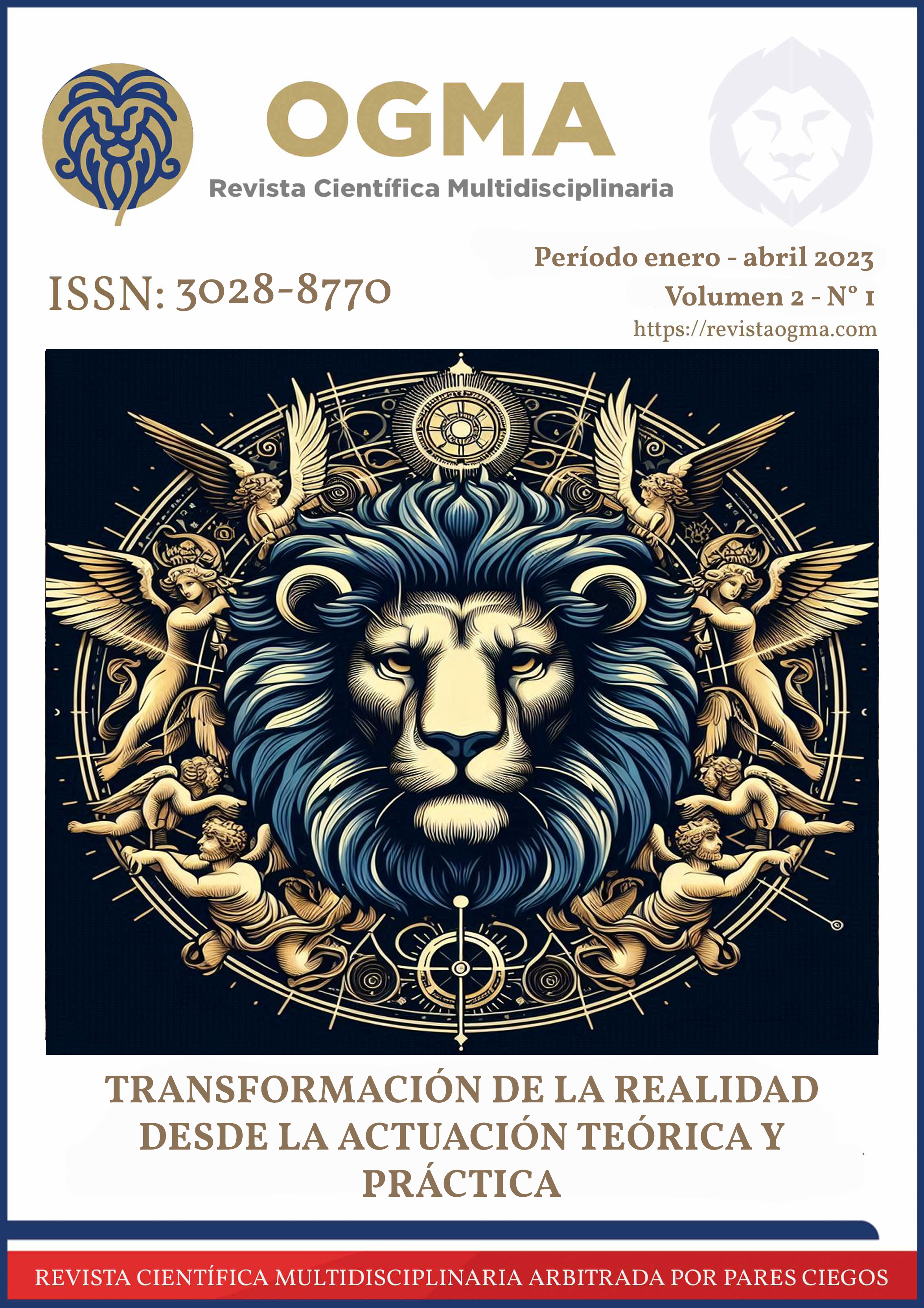Strategies for teaching students with special educational needs
Keywords:
Special education, Differentiated attention, Pedagogical intervention, Educational inclusion, Learning difficultiesAbstract
In most of the institutions of the territory there is a low academic performance in students with special educational needs, so awareness, sensitivity and commitment to inclusive education should be promoted. The objective is to propose teaching strategies in order to promote meaningful learning of students with special educational needs in the Unidad Educativa Fiscomisional Cinco de Mayo. The methodology used has a mixed approach that involves all the actors involved in the teaching process, for this purpose, a literature review and a survey were applied to a sample of 35 students, in which it was found the need for the application of effective teaching strategies that adapt to the learning difficulties presented by students in the classroom. For this reason, the use of ludic strategies is presented as proposals to improve the efficiency in the teaching-learning processes provided by the teachers, having as a result that the teaching performance is necessary in the student training processes, therefore, they must adapt their teaching strategies to the different needs presented by each of the students for the construction of their knowledge through meaningful learning.
References
Araujo et al. (2016). Estrategia de enseñanzaaprendizaje basada en la lúdica en tercero de primaria. Infancias Imágenes, 12(1), 89-97.
Aristizabal et al. (2016). El juego como una estrategia didáctica para desarrollar el pensamiento. Título abreviado. Sophia, http://www.scielo.org.co/pdf/sph/v12n1/v12n1a08.pdf
Armas, L., & Alonzo, I. (2021). Las TIC y competencia digital en la respuesta a las necesidades educativas especiales durante la pandemia: Una revisión sistemática. Revista internacional de pedagogía e innovación educativa, 11(1), 11-47. https://editic.net/ripie/index.php/ripie/article/view/58/46
Cardona, A., Arambula, L., & Vallarta, G. (2020). Estrategias de atención para las diferentes discapacidades; Manual para padres y maestros. Trillas. https://www.riadis.org/wp-content/uploads/2020/10/Estrategias-de-Atencion-Para-Diferentes-Discapacidades.pdf
Castro Villalobos, S., Casar Espino, L., & García Martínez, A. (2019). Reflexiones sobre la enseñanza inclusiva del inglés apoyada por tecnologías emergentes. Revista Cubana de Educación Superior, 38(1), http://scielo.sld.cu/scielo.php?script=sci_arttext&pid=S0257-43142019000100012&lng=es&tlng=
Cedeño, J., & Barcía, M. (2020). El aprendizaje cooperativo como estrategia educativa para estudiantes con discapacidades en el bachillerato. Polo del Conocimiento: Revista científico – profesional, 5(12), 616-636. https://dialnet.unirioja.es/servlet/articulo?codigo=8042584
Constitución de la República del Ecuador. (2008). Registro Oficial 449. Ecuador. https://www.oas.org/juridico/pdfs/mesicic4_ecu_const.pdf
EDUCO. (2019). Cuaderno de valores. https://www.educo.org/Blog/Que-es-educacion-inclusiva-y-por-que-es-importante
Goldy, E. (2022). Estrategias lúdicas en estudiantes de cinco años: Una revisión sistemática [tesis de doctorado]. Universidad Cesar Vallejo. https://repositorio.ucv.edu.pe/bitstream/handle/20.500.12692/78236/Espiritu_CG-SD.pdf?sequence=1&isAllowed=y
Gómez, M. (2016). ¿Aprender jugando? https://idus.us.es/bitstream/handle/11441/45069/TFG%20Marta%20M%C2%AA%20Gomez%20Alvarez.pdf?sequence=1
Gutierréz, M. (2022). Regreso a clases después del confinamiento. Sieteolmedo. https://sieteolmedo.com.mx/conducta-aspectos-emocionales1/la-estimulacion-del-bebe-y-el-nino-preescolar-bases-para-el-futuro-2-2/ .
Lima, I., & Tobar, M. (2021). Calidad educativa desde la inclusión y su realidad en Ecuador. Revista Digital Publisher, 6(2),175-186.: https://doi.org/10.33386/593dp.2021.2-1.534
López, I., & Valenzuela, G. (2015). Niños y adolescentes con necesidades educativas especiales. Revista Médica Clínica Las Condes, 26(1), 42-51.
Marín y Mejias, A. (2015). Estrategias ludicas para la enseñanza de las matematicas en el grado quinto de la Institucion Educativa La Piedad. Fundación Universitaria los Libertadores, https://docplayer.es/60191023-Estrategias-ludicas-para-la-ensenanza-de-las-matematicas-en-el-grado-quinto-de-la-institucion-educativa-la-piedad.html
Ministerio de educación del Ecuador. (2022). Educación Especializada e Inclusiva. https://educacion.gob.ec/educacion-especial-inclusiva/
Molina, M., López, L., Cárdenas, J., Alvares, P., & Martínez, D. (2021). Retos en la docencia frente a las necesidades educativas especiales en las aula de clase. https://alejandria.poligran.edu.co/bitstream/handle/10823/3014/RETOS%20DOCENTES%20FRENTE%20A%20NEE.pdf?sequence=7&isAllowed=y
Pamplona Raigosa, J., Cuesta Saldarriaga, J. C., y Cano Valderrama, V. (2019). Estrategias de enseñanza del docente en las áreas básicas : una mirada al aprendizaje escolar. Eleuthera, 21, 13–33. https://doi.org/10.17151/eleu.2019.21.2
Quintanilla, N. (2020). Estrategias lúdicas dirigidas a la enseñanza de la matemática a nivel de Educación Primaria. Mérito, 2(6), 143-157 https://revistamerito.org/index.php/merito/article/view/261/779
Torreros, D. (2021). Qué es una encuesta, para qué sirve y qué tipos existen. https://blog.hubspot.es/service/que-es-una-encuesta
UNIR ¿Qué son las necesidades educativas especiales? https://ecuador.unir.net/actualidad-unir/necesidades-educativas-especiales/
Villón, A., & Valverde, K. (2019). LA EDUCACIÓN ESPECIAL EN LA REALIDAD ECUATORIANA DEL SIGLO XXI. Semantic Scholar. https://www.pedagogia.edu.ec/public/docs/205d4423d4c9d8da1cd91a384fe5ffd3.pdf
Downloads
Published
Issue
Section
License
Copyright (c) 2023 Multidisciplinary Scientific Journal Ogma

This work is licensed under a Creative Commons Attribution-NonCommercial-ShareAlike 4.0 International License.

